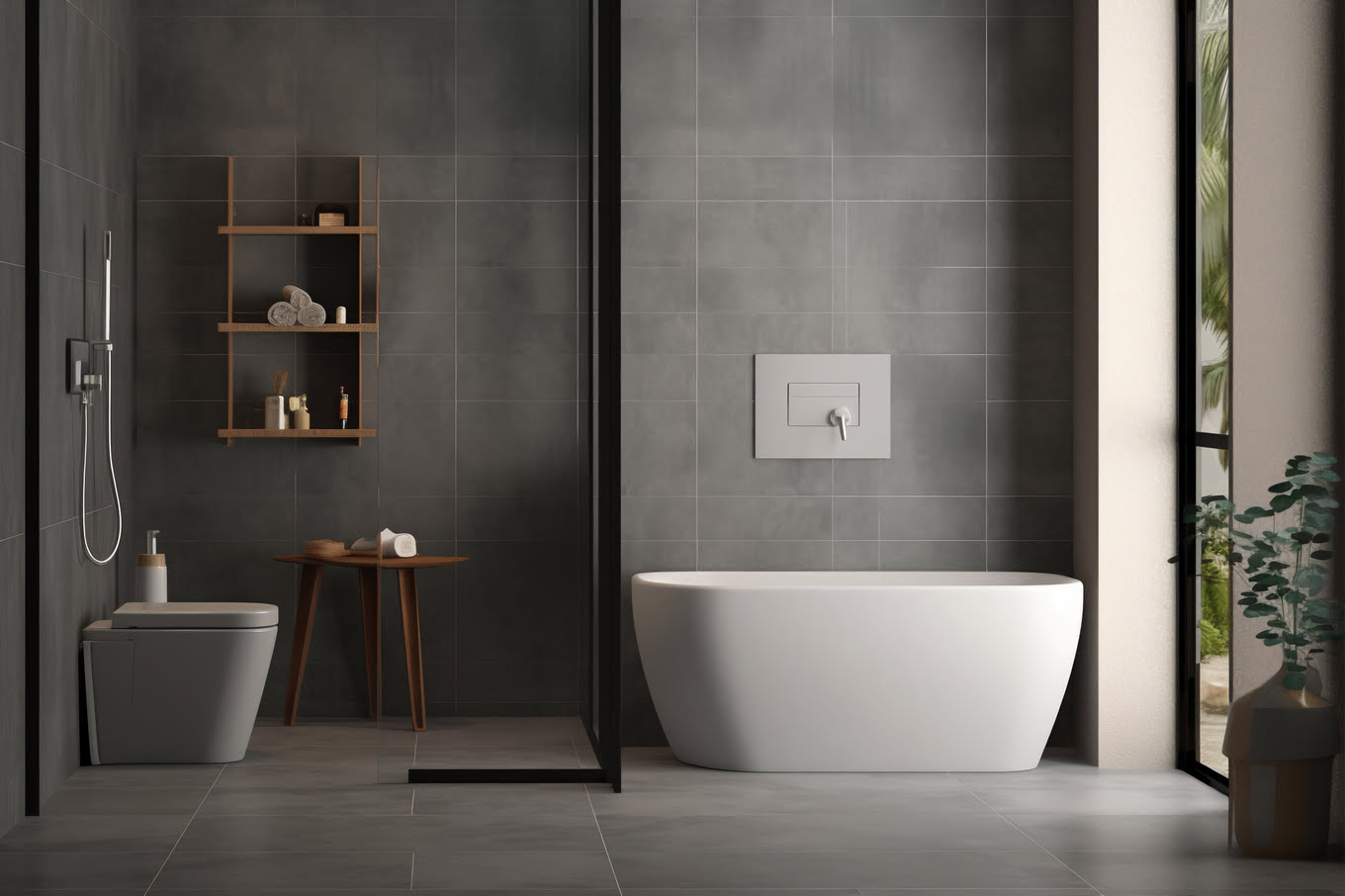
Installing a fan is an unquestionable necessity to ensure proper ventilation in the bathroom and eliminate moisture and unpleasant smells. Ventilation openings must be present in every bathroom and kitchen. Choosing the right device should be based on several important parameters to maximize ventilation efficiency.
What fan for a windowless bathroom is suitable? What parameters should it have? Here are the key features of fans designed for closed spaces.
Bathroom fans and their efficiency
The fan should be efficient enough to ensure adequate air exchange in the bathroom. It is recommended that the device guarantees an airflow of at least 50 cubic metres per hour (m³/h) or about 8 to 10 air changes per hour. This can be calculated by multiplying the bathroom's volume by 10 to obtain the minimum required fan efficiency in m³/h.
In bathrooms with an area not exceeding 6.5 m2, so-called gravitational ventilation finished with a standard grille in the chimney should suffice. The size of the room determines the choice of the right fan. For large bathrooms, a more powerful fan will provide better air circulation.
Noise level of bathroom fans
The bathroom fan should be quiet, especially if the bathroom is near the bedroom, children's room, or other areas where the noise of the fan may be bothersome. The ideal fan generates noise at a level not exceeding 30 decibels (dB).
Fans equipped with additional features
Bathroom fans can be equipped with various additional features that enhance their functionality and usage comfort:
- humidity sensor - as the name suggests, a fan with a humidity sensor automatically turns on when the humidity level in the bathroom exceeds a set threshold. This is especially important in windowless rooms;
- timer - allows setting the fan's working time after the light is turned off. The timer ensures that humid air is removed even after the user leaves the bathroom;
- motion sensor - the fan turns on when someone enters the bathroom and turns off after a specified time or lack of activity. Fans with a motion sensor are among the most commonly chosen models.
Resistance to moisture and high safety standards
The fan should have an appropriate protection degree (IP) to ensure its safe use in humid conditions. Models marked with IP45 or higher are usually installed in bathrooms.
Bathroom ventilation and energy efficiency
When choosing a fan for a windowless bathroom, it's worth noting its energy efficiency. A model with, for example, an ENERGY STAR certification or other similar designation can positively impact your wallet and ultimately save on energy bills.
What bathroom fan is necessary? Summary
Ventilation in bathrooms and kitchens is essential to maintain a healthy environment, prevent building damage, and ensure users' comfort and safety.
Bathrooms are places where large amounts of water vapour are generated daily through baths, showers, and other hygiene-related activities. Without proper ventilation, excess moisture can condense on walls, mirrors, and other surfaces, creating ideal conditions for mould and fungi to grow. These organisms can cause and exacerbate health issues such as allergies or asthma.
In summary, choosing a fan for a windowless bathroom should consider the above criteria to ensure the device works effectively, quietly, and energy-efficiently. This way, the bathroom will be dry, fresh, and free from mould and other problems related to excessive humidity.


















